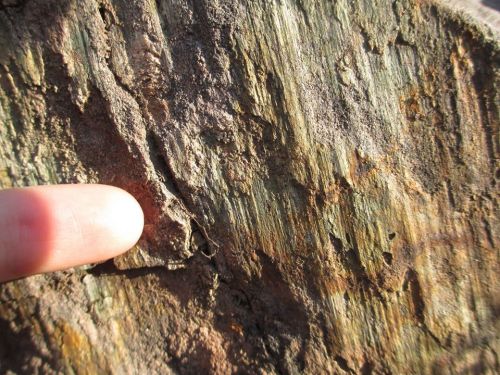Lights, Camera, Action!As a geologist I spend a vast amount of time staring at rocks, whether it be
Lights, Camera, Action!As a geologist I spend a vast amount of time staring at rocks, whether it be out in the field or in the lab. Whatever I’m doing I always take pictures, as proof of what I’ve seen, evidence to back up my assumptions or just because a professor has demanded diagrams and I am artistically limited.Through my education I have come to realise one thing; no matter how good the rocks look the key is lighting. When mapping in the Spanish Pyrenees the best light was at dusk or dawn, when the sun sat lowest in the sky. As you can see it beautifully highlights the cross laminations (bottom photo: laminations produced by the flow of material; the height of each set can indicate water depth and the direction in which the lines dip is the direction of flow) and slickensides (top photo: precipitation of minerals, here calcite, along a fault plane as one piece of rock slides past another) on the Buntsandstein Formation. These rocks represent an ancient braided river that swept eroded material off the Hercynian mountain range 250 million years ago.As every good scientist knows there should always be a scale as the processes that form these structures are fractalic (they can form on a variety of scales through similar processes and it is their scale as well as their shape that define what caused the structures to form e.g. a rain drop and a river will produce similar structures during flow, the only difference being the scale of the structure formed). In this case I have used my GPS and my finger (it was very early in the morning and I had forgotten my ruler) to define the scale.- WatsonImage Credit: Watson Further reading: http://bit.ly/1wMc04G -- source link
#photography#geologist#geoscientist#scientist#nature#landscape#scale#spain#pyrenees#buntsandstein formation#hercynian

